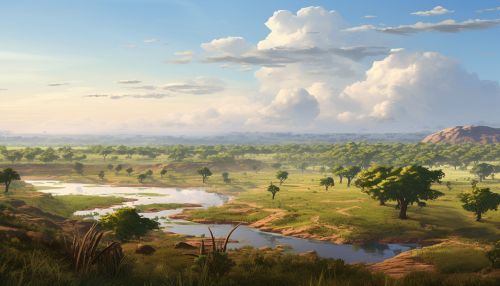Mali
Geography
Mali, officially the Republic of Mali, is a landlocked country in West Africa. It is the eighth-largest country in Africa, with an area of just over 1,240,000 square kilometres.


The country's northern region, in the Sahara, extends into the arid Sahel. The landscape transitions from desert in the north, through a Sahelian belt, to savannah in the south. The Sudanian savannah in the south and east is the most fertile region, where the country's largest cities, including Bamako, are located.
History
The history of Mali is characterized by the rise and fall of several significant civilizations and empires. The area that is now Mali was once part of the three West African empires that controlled trans-Saharan trade: the Ghana Empire, the Mali Empire (for which Mali is named), and the Songhai Empire.
Economy
Mali's economy is based on agriculture and mining. Some of Mali's prominent natural resources include gold, being the third largest producer of gold in the African continent, and salt. About half the population lives below the international poverty line of $1.25 a day.
Culture
Mali's cultural identity is rooted in the histories of the great empires and societies that have existed on its soil. The country's rich cultural heritage is evident in its literature, music, dance, and art. The music of Mali is widely known outside the country, especially the music from the region around Timbuktu, such as that of the Tuareg rebel band Tinariwen.
